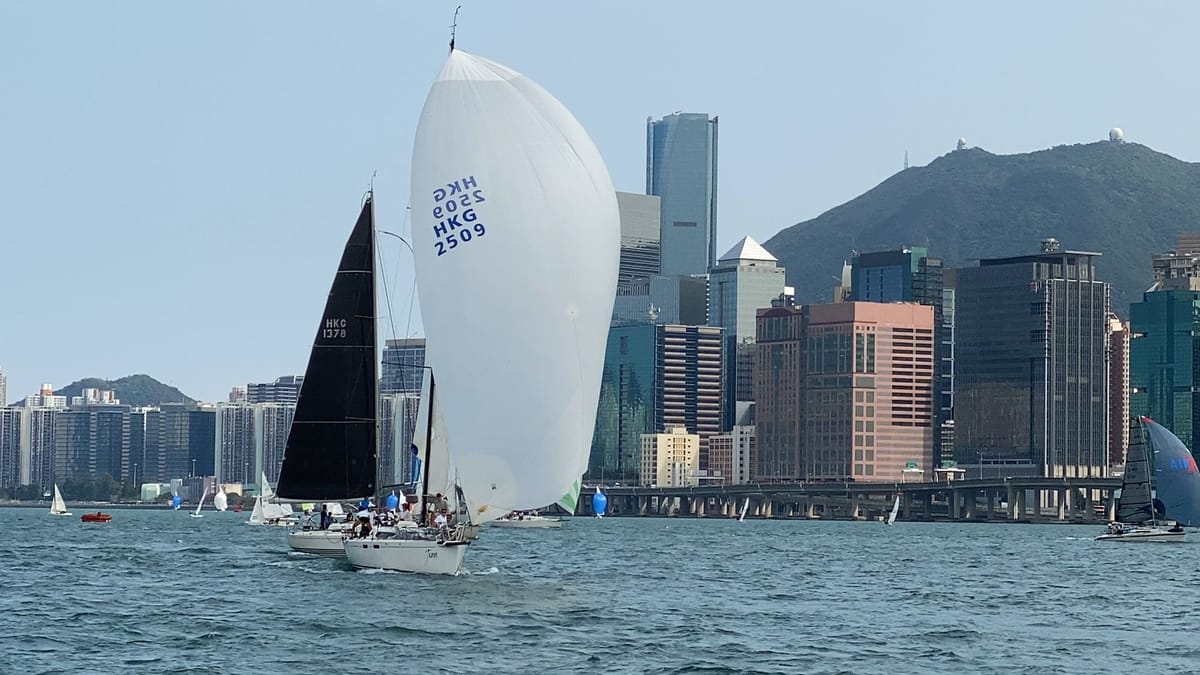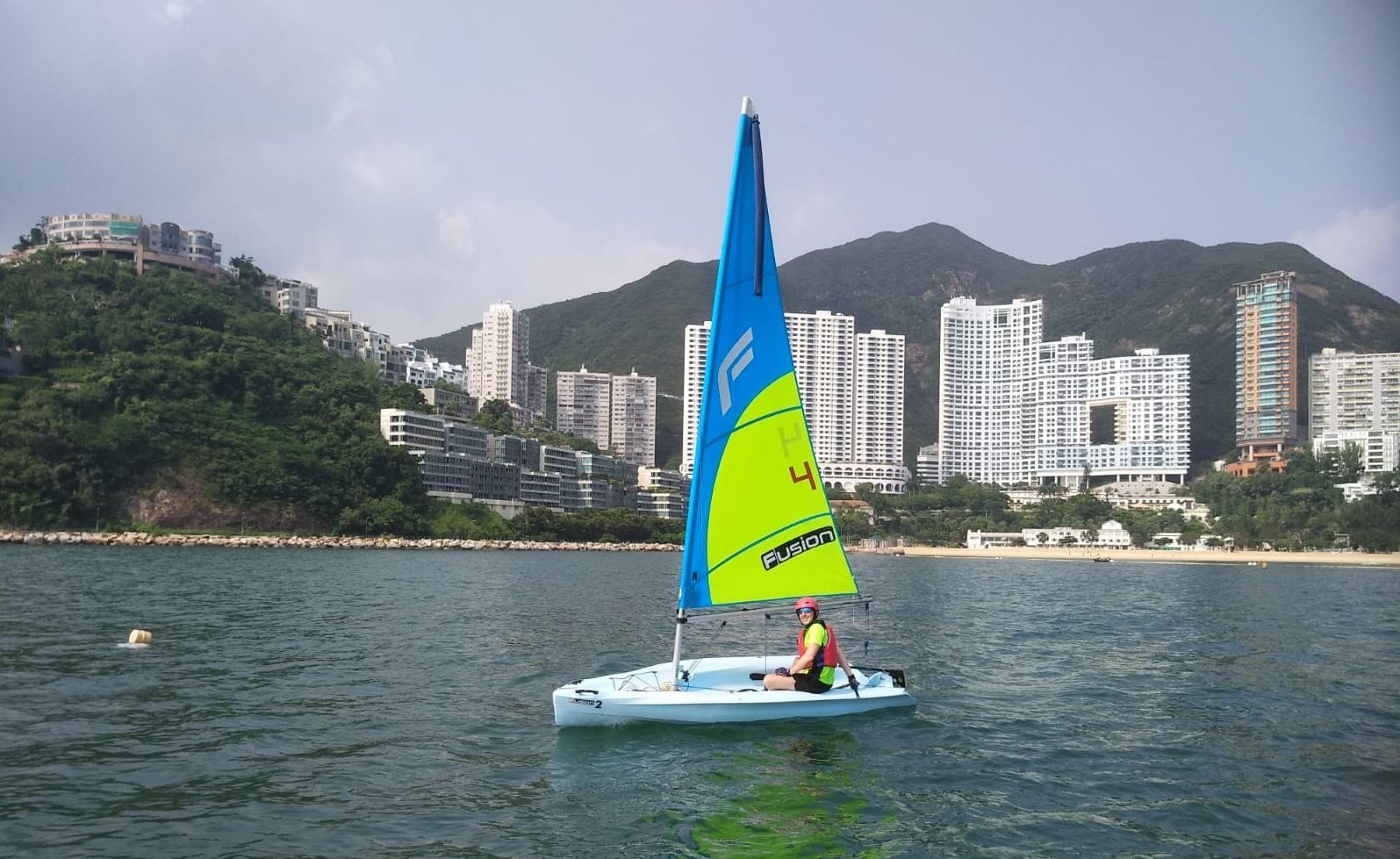A guide to sailing in Hong Kong
My guide to sailing in Hong Kong

This is a work in progress that I'm sharing in the hope that in its unfinished state it's still useful to some.
At first glance Hong Kong seems like a giant mall stuck in a geopolitical tug of war. But you’ve discovered its natural beauties: mountains rising out of the South China Sea with dotted with dozens of bays inlets and channels. The sea calls you to take to the water and explore.
You take the public ferries to islands and hike around. You join junk boat parties and spend your weekends drinking anchored off of otherwise secluded beaches with a dozen other loud and obnoxious parties. But something’s missing. If you haven’t experienced Hong Kong through sailing, you’re missing something that makes this city a unique place to call home.
I grew up sailing on the Great Lakes with family in the 80s and 90s. I came to Hong Kong over a decade ago and recently re-discovered my love of sailing. This guide is my attempt to share with you the information I’ve uncovered and the lessons I’ve learned (and am learning!) joining the sailing community in Hong Kong.
If you have any questions, comments or feedback on this guide, please email me at sailing@larrysalibra.com or tweet at me on Twitter!
Learning to sail in Hong Kong
The path you take to learn sailing in Hong Kong will depend on the type of boat you start learning on. You can start on any boat you want. In this section, I’ll tell you about the options you have and share my advice on how to proceed. The principles of sailing are the same no matter the type of boat, so don’t worry if you start with one type of boat and want to sail on another - the skills you learn will transfer over.
In this section, I’ll be talking about taking courses to learn sail. A large part of your learning will actually come from experience sailing with more advanced sailors. You should feel free at any point to join a friend their boat for racing or cruising. This will be a great supplement to structured courses and will help to round out your experience.
In Hong Kong, there are three types of boats you can learn sailing on dinghies, keelboats and sailing yachts (aka “Big boats”).
Dinghies
Dinghies are small sailboats that have no keel and no cabin. They generally only fit 1 to 3 people. Without a heavy keel to counterbalance the force of the wind, they rely on bodyweight of the crew to prevent to the boat from capsizing. In Hong Kong, sailing dinghies typically do not have motors.
Since dinghies are small and light, the forces on the sails and rigging are relatively small. They also respond very quickly to changes in sail trim, sea and wind conditions.
Keelboats
Keelboats (of which sports boats are one type) are larger than dinghies and have a weighted keel that helps to keep the boat upright. Some keelboats in Hong Kong, such as the J/80, use outboard motors. While they usually have cabins, the cabins are typically small and with minimal facilities and rarely used for overnight cruising in Hong Kong.
Sailing Yachts
Sailing yachts - often called “Big Boats” in Hong Kong to differentiate them from their smaller cousins start at around 30 feet (9 meters) and go as big as your wallet can afford. Their cabins have facilities that range from spartan - enough for an occasional overnight coastal trip - to luxurious and suitable for weeks or months of cruising across oceans.
How should I choose which type of boat to start learning on?
I recommend to those that are new to sailing start sailing dinghies. Because dinghies are light and forces are small, the amount of damage that you can do to yourself, the boat and others is a lot less than larger boats.
In the typical Hong Kong beginner dinghy sailing course, you’ll either be sailing in a boat on your own or with a classmate on day one of your first course. This will give you the opportunity to experiment with the boat and the wind and the sea and see how it performs. You’ll be wearing a helmet and a lifejacket and learning in calm, sheltered waters away from most marine traffic. This combined with the fact training dinghies are typically plastic and float even when full of water makes learning sailing in a sailing dinghy a relatively safe, consequence-free environment compared to learning on larger boats. As long as you stay away from other boats, the worst that can really happen is that you the boat will tip over and you’ll get wet.

Because of this freedom to experiment and the fact that you will be in total control from day one, with no instructor on-board, you’ll be able to quickly build up your sailing sense and learn the different points of sail. Since sailing training dinghies are so light, you’ll quickly feel each change of the wind and sea and watch as the boat immediately responds to your adjustments to the sails and steering.
In comparison, learning to sail is a much different experience. Larger boats are much heavier and the forces on sails are intense. With flammable fuels, complicated equipment on-board and it is easy to cause a lot of expensive damage either to the boat, the crew on the boat or other vessels. Because of the size of the boat and the forces involved, you’ll need more people to operate the boat. This is makes learning to sail on a larger boat more a team activity.
You will spend a few days or more first learning how to serve as crew on a larger boat. The, skipper, the person in charge of the boat, will assign you a task: steering the boat, trimming the sails, etc. Since you’ll be responsible for only a small part of the things happening on the boat at a time, you might find it harder to get a big picture sense of what’s happening. You’ll eventually have to learn all of the jobs well enough before you can get to the point where you are competent enough to be in command of a larger sailing vessel and manage the boat and its crew.
You’ll lack some of the freedom to experiment and fail on a big boat. In a dinghy, you’ll be able to do things like overpower the boat with too much sail in strong winds and experience how the boat behaves (hint: you’ll probably end up in the water!). In contrast, on a big boat, doing things incorrectly can break expensive equipment or put the boat or its crew in danger, so the instructor will stop you before you make mistakes like that.
Because of this, I recommend starting your sailing journey in Hong Kong by completing a beginning dinghy sailing course even if you, like me, plan to move on to big boat sailing later. Having a good handle on the basics of sailing dinghies will put you in an excellent position to move into sailing other types of craft.
Choosing a dinghy course
In Hong Kong, the national governing body for sailing, the Hong Kong Sailing Federation (HKFS), runs a dinghy sailing certificate scheme that awards certificates as you complete each level of the course. These certificates are recognized by the government-run LCSD water sports centers and Hong Kong’s private clubs as proof that you have the skills necessary to rent and operate various dinghies.
You’ll need to acquire the HKFS Level 1 and Level 2 certificates to rent basic dinghies. Hong Kong’s sailing clubs typically teach Level 1 and Level 2 as one five-day course while the LCSD water sports centers teaches offers separate Level 1 and Level 2 courses that are 2 days and 4 days in length respectively.
One of the goals of private sailing clubs in Hong Kong is to further interest in the sport. With that in mind, if you might want to join one of Hong Kong’s clubs, you should consider taking the courses offered by that club. That you learning sailing via the club’s training programs may be be looked upon favorably when one day you apply for membership. It will help you to start familiarizing yourself with the facilities, staff and members of the club and get you a head start on finding people you might be able to sail with in the future.
If cost is a concern, the cheapest option is to take courses through the LCSD because these are subsidized by the government. What you save in cost, however, you’ll make up in application complexity. LCSD course spots are handed out by lottery which can make it difficult to plan for if you have a busy schedule and frequently changing schedule.
- LCSD dinghy sail training
- Royal Hong Kong Yacht Club dinghy sail training
- Hebe Haven Yacht club dinghy sail training
- Aberdeen Boat Club dinghy sail training
Practice after your Level 1 & Level 2 certificate
Congratulations! You are now a sailor! The next step is to get more time on the water to practice your skills. The cheapest way to do this is go to one of the government’s LCSD water sports centers and hire a dinghy for half a day. Prices are roughly HK$54 for a morning or afternoon and include a lifejacket. You’ll need to bring your Level 1 & Level 2 certificates along with your Hong Kong ID each time you rent a dinghy. You’ll also want to bring the HKFS Dinghy Logbook that was given to you in your introductory course so that they can record each sailing session in your long. You’ll need the log book to show that you have the practice experience needed to move on to Level 3 and it will also come in handy if you join a club to demonstrate your participation in the sport.
Level 3, keelboats or big boats?
After, completing your beginner dinghy sailing course and getting some practice, you’ll need to decide where to go next. As someone who really enjoys racing and cruising on larger boats, I’d encourage everyone to at least try sailing on big boats or keelboats early in their sailing careers.
Big boat training
More on big boat training coming soon...
Getting yourself licensed
As an individual who might buy a boat, there are two types of licenses issued by the Hong Kong Government that you'll need to think about. The most important is the Pleasure Vessel Operators Certificate of Competency (PVOCC) issued by the Marine Department. You - or someone else on the boat - will need to have this if you want to operate a Hong Kong-flagged pleasure boat that has an engine. Second, is a radio license issued by the Office of the Communication Authority. You'll need this to use marine radio equipment.
More details to come..
Future additions
I’ll be adding more to this guide as time permits and as my sailing journey continues.
- Racing in Hong Kong
- Cruising the waters of Hong Kong
- Joining a club
- Buying a boat
- Safety while sailing
